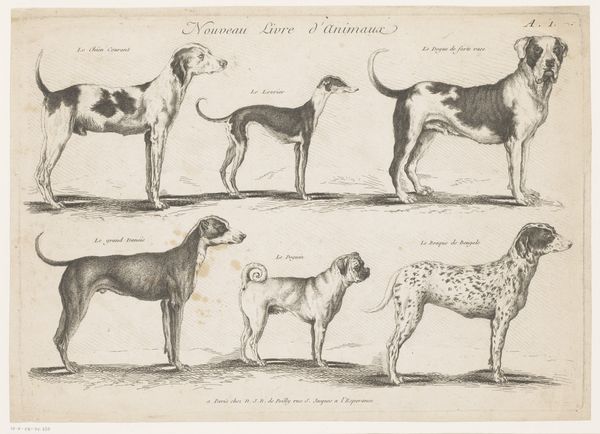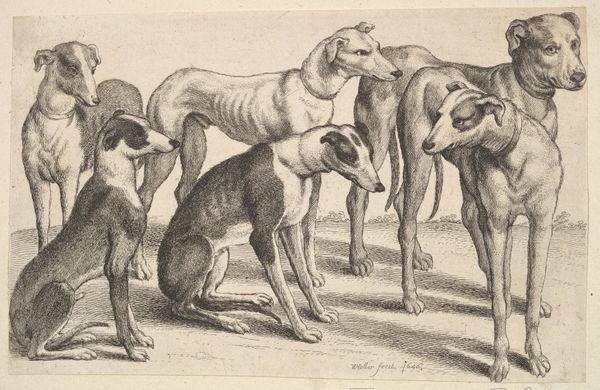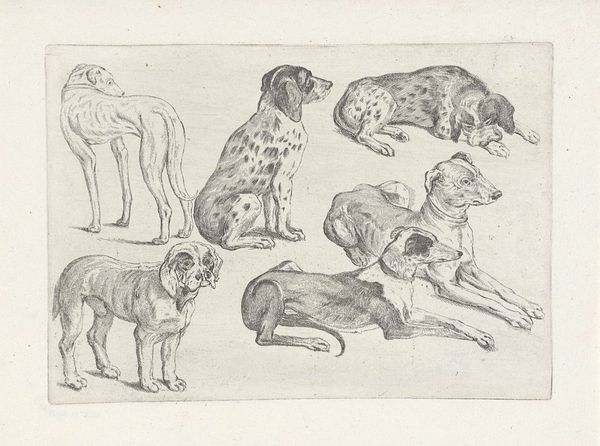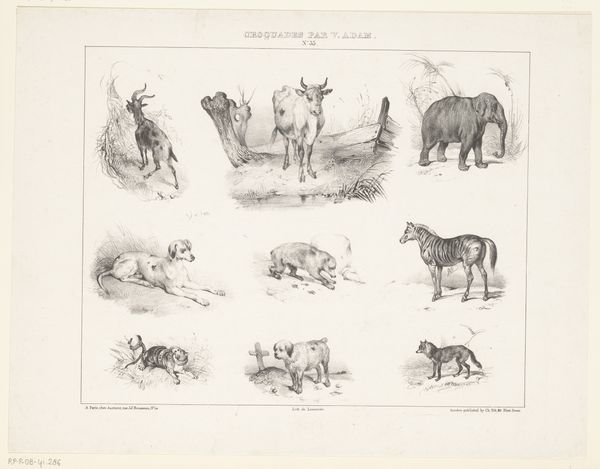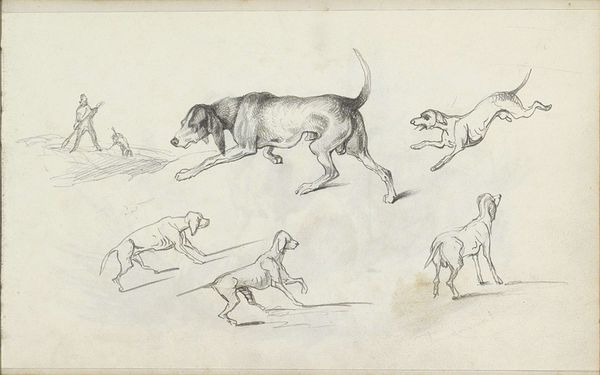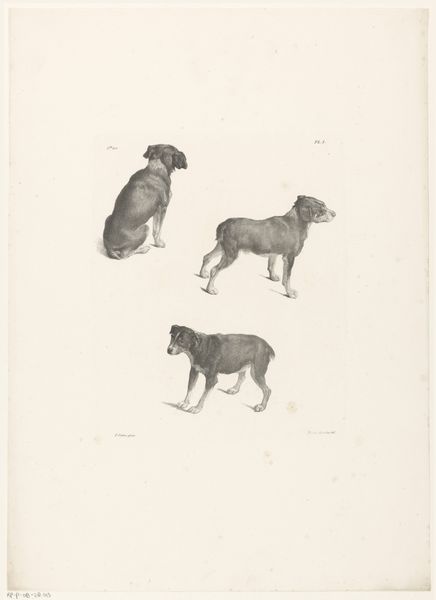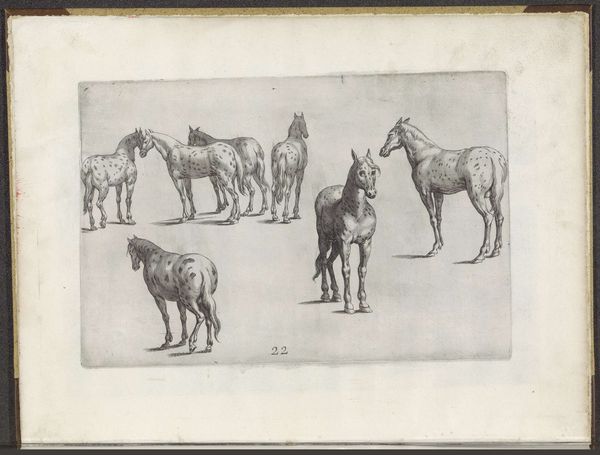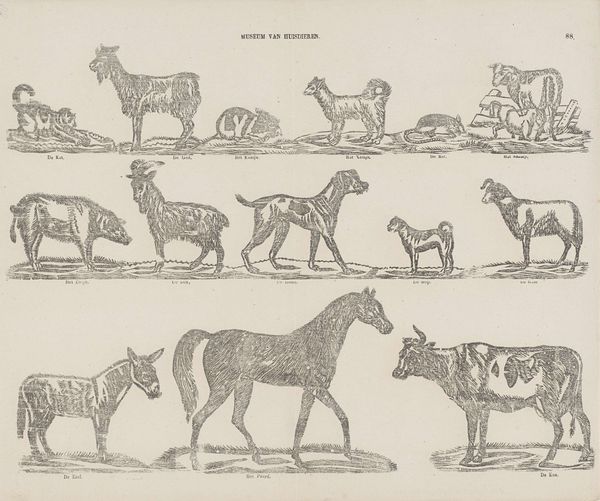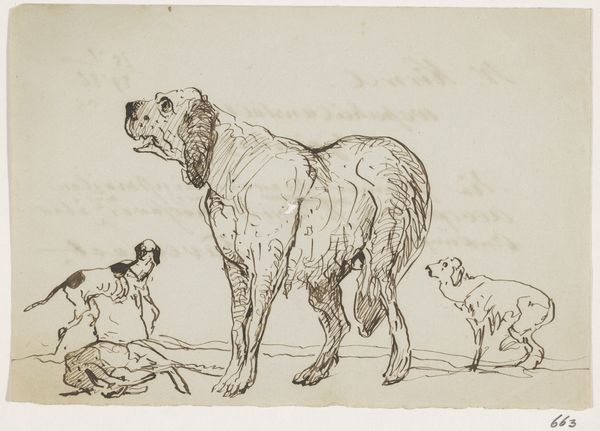
Dimensions: height 258 mm, width 385 mm
Copyright: Rijks Museum: Open Domain
Editor: This drawing, "Hondenrassen" or "Dog Breeds," is from somewhere between 1750 and 1820. It's by an anonymous artist, made with ink on paper. What strikes me is how the artist focused on accurately depicting each breed rather than imbuing the image with much emotion. What do you see in this piece? Curator: I see a document of production, really. Paper and ink, readily available materials, utilized to record and classify. Consider the social context: the rise of natural history as a science. This isn't just art; it's visual data collection. Each stroke of ink, a deliberate act of recording the labor put into breeding these animals for specific functions. The print facilitates distribution – copies for study and consumption. Do you notice any recurring lines, perhaps in how muscles or coats are defined? Editor: Yes, there's a repetitive, almost diagrammatic approach to the shading. It’s less about individual expression and more about objective rendering. Almost like a page from a dog breeder’s manual? Curator: Precisely. And the 'Romanticism' tag, while technically relevant for the period, seems almost ironic here. The romance is in the classification, the understanding and ultimately, the control over nature. It's a precursor to modern mass production, using drawing as a tool to solidify processes of selective breeding. It's about the means of production extending beyond just art, influencing other realms. Editor: So, it's not just a pretty picture of dogs; it's a snapshot of how knowledge was produced and disseminated, and how it influenced animal husbandry practices. That changes my perspective quite a bit. Curator: Indeed. It demonstrates the intersection of artistic technique with emerging scientific methods and the instrumental use of images for societal needs. The artist's "hand" is almost irrelevant; it's the repeatable image and its impact that matters. Editor: Thanks, I didn't think of it as a document of material production at first. I'll never look at dog drawings the same way.
Comments
No comments
Be the first to comment and join the conversation on the ultimate creative platform.


